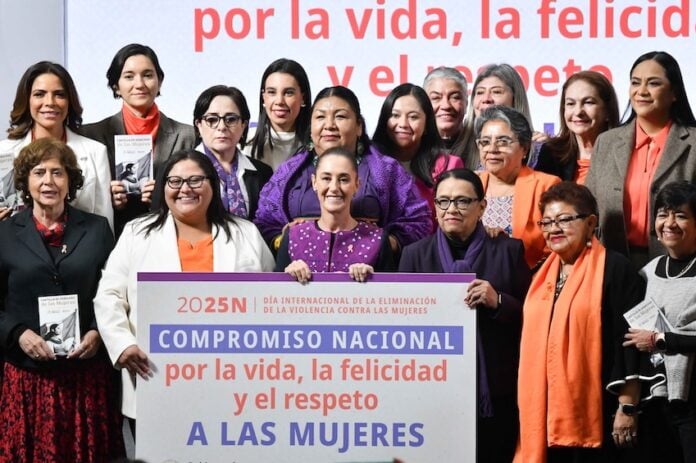Starting Tuesday, Nov. 25, the International Day for the Elimination of Violence Against Women, the focus of Mexican society for the next half month will be on raising awareness about gender-based violence, as the Sheinbaum administration launches “16 Days of Activism Against Violence Toward Women.”
“We are providing a toolkit, outreach materials and a broad national program of activities at all three levels of government,” Deputy Minister for Women Ingrid Gómez said Tuesday during the president’s morning press conference. “The focus of these 16 days … is on dissemination, consciousness-raising and sensitization.”
📣 Día Internacional para la Eliminación de la Violencia contra la Mujer #25N
🚫Ninguna violencia es aceptable
✊🏾Ningún derecho es negociable.🙋🏽♀️Contra todas las violencias, defendemos, exigimos, tejemos y transformamos.
Hoy comienzan los 16 días de Activismo💜 pic.twitter.com/Lad7Sio1N1
— MESECVI-OEA CEVI (@MESECVI) November 25, 2025
The daily actions from now through Dec. 10 will range from courses for public servants and the public, to film screenings, rights booklets and outreach to women with disabilities, among many others.
Minister for Women Citlalli Hernández, also speaking at the president’s mañanera, called for transformative action to combat sexism and violence against women. “To generate a cultural shift and combat sexism, we call on men to join us in the goal of ensuring that women and men have the same rights and live a full life free from violence,” Hernández said.
The impetus for the 16-day program is the worsening security situation for women in Mexico.
The rate of female victims of common crimes in Mexico has risen by 7.5% in 2025, with 100,989 women filing reports in the first nine months of the year, compared to 93,899 during the same period in 2024, according to data from the Executive Secretariat of the National Public Security System.
The percentage of women compared to men who have been victims of a crime also increased, from 31.2% of all victims in January to 39.5% in September.
While the number of femicides has fallen by 17.7% this year, from 624 to 513, the prevalence of femicides in certain cities has increased. As of September, the city of Culiacán in Sinaloa, where cartel-related violence has surged, reported the highest rate of femicides, with 3.96 per 100,000 women.
What are the planned activities?
The 16 days of activism start Tuesday alongside a number of protest marches calling for greater action, followed by:
- Nov. 26: Mass distribution of a rights booklet.
- Nov. 27: Digital platforms to sign an agreement to guarantee protection for women experiencing violence.
- Nov. 28: Film screenings on violence prevention.
- Nov. 29: Walks with women to identify risks and promote safe routes.
- Nov. 30: Community murals with teenagers and young adults.
- Dec. 1: Conference on violence prevention at universities.
- Dec. 2: Community outreach with women with disabilities.
- Dec. 3: National meeting: Building networks between the government and organized women.
- Dec. 4: Training for educational staff and signing of an agreement with social media platforms to combat digital violence.
- Dec. 5: National meeting of justice centers.
- Dec. 6: Peacebuilding workshops with Mexico’s women weavers.
- Dec. 7: Runs and walks for women’s wellbeing.
- Dec. 8: Talks on sexual abuse and a panel on access to digital justice.
- Dec. 9: Reflection sessions with men for a just and violence-free reality.
- Dec. 10: Specialized panel on data and statistics for monitoring safe digital spaces.
“We aim to be present on the ground, where women spend their lives,” emphasized Gómez.
With reports from Milenio, Infobae, El Economista and El Financiero
